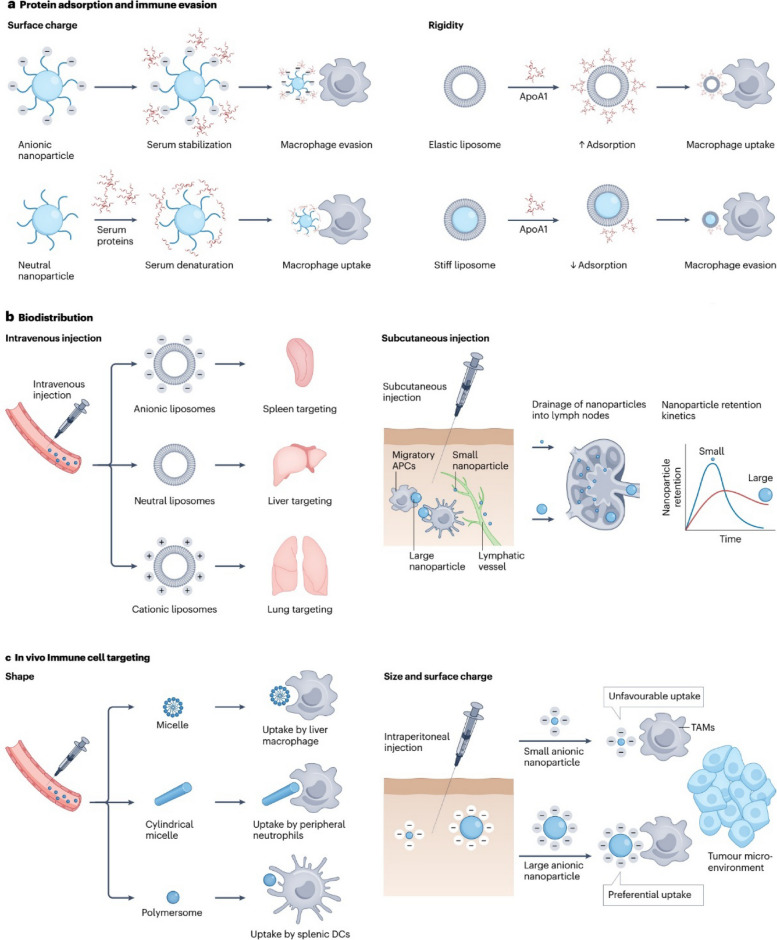Fig. 23.
Influence of nanomaterial physical properties on physiological outcomes. A, Various nanomaterial features impact protein adsorption and immune system interactions. Altering nanoparticle surface charges influences the preservation of serum proteins, which can be identified by circulating macrophages. The rigidity of liposomes determines the specific protein type that adsorbs to the surface, which in turn affects liposome clearance by macrophages. (B), Several nanomaterial properties also affect targeting locations. Surface charge manipulation of systemically delivered liposomes helps determine the target organs. The size of subcutaneously injected nanoparticles can directly or indirectly control lymph node targeting and nanoparticle retention kinetics within lymph nodes. C, Adjusting physical properties in nanomaterial design dictates interactions with particular immune cell subtypes. Nanomaterial shapes play a role in their engagement with specific innate immune cell subsets from various organs. Both surface charge and size help direct the targeting of tumor-associated macrophages (TAMs) within the tumor microenvironment. APC denotes antigen-presenting cell; ApoA1 represents apolipoprotein A1; and DC refers to dendritic cell. Reprint from [130] with a permission from Springer Nature

